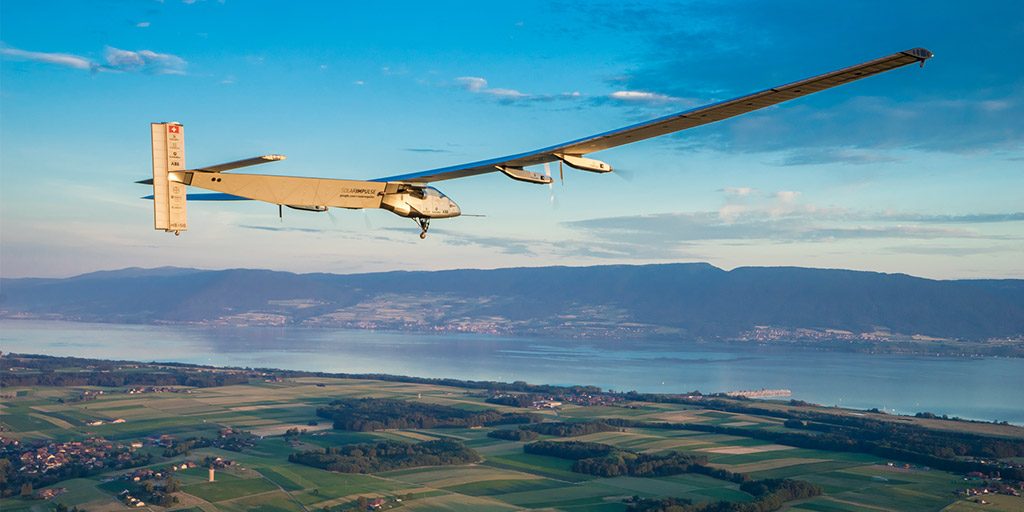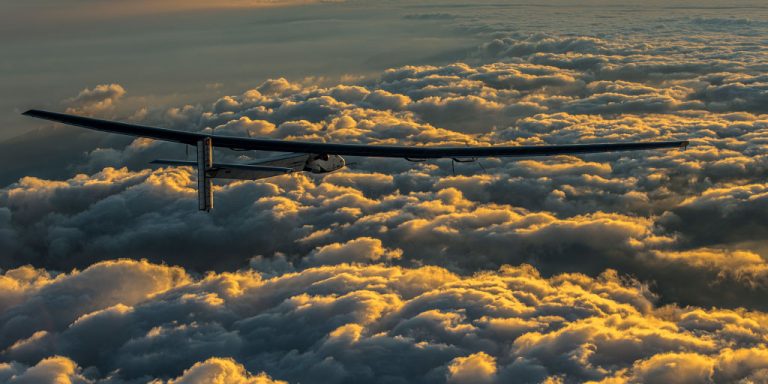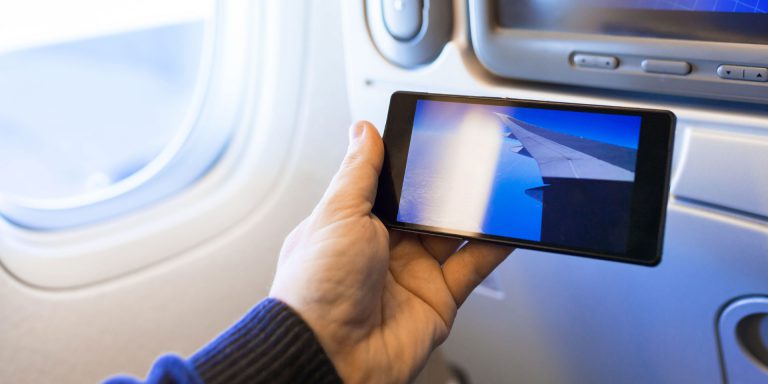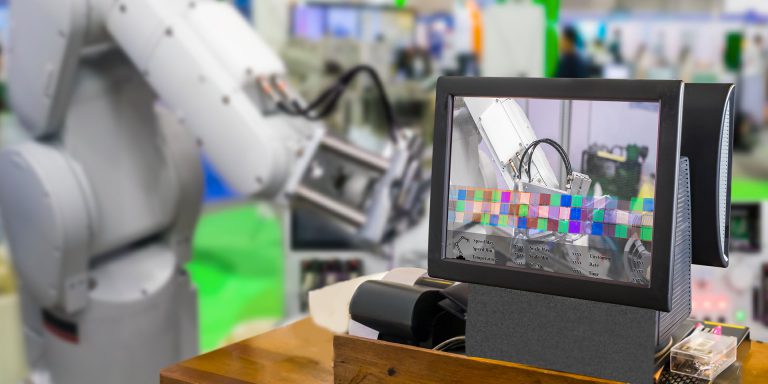Solar Impulse: perpetual flight
Solar Impulse 2 and the 17,000 solar cells on its wings rhyme with innovation. This first flight around the world using solar energy has pushed back the limits of technology.
« It was not possible to make it fly like a normal plane »
Christian Le Liepvre, Altran, Head of the Solar Impulse partnership
“It was not possible to make it fly like a normal plane,” immediately announced Christian Le Liepvre, head of the Solar Impulse partnership at Altran. And for good reason. The single-seater which made the headlines this summer by making the first nonstop flight without refuelling, is powered by sunshine. Solar Impulse captures its energy in the daytime to climb in altitude and to recharge the batteries. When night falls it descends by gliding from 9,000 to 3,000 metres and the batteries then take over. As a result, in order to glide, Solar Impulse needs every cm² of wing surface. Its overall size is that of a jumbo jet, for a weight of only two tonnes. “In order to lighten the aircraft as much as possible, even the quantity of resin to make the joints between the structure plates was reduced”, reveals Christian Le Liepvre. Regarding the materials used, it’s all about lightness too, with extensive use of carbon, which is usually found in shipbuilding. It was difficult to slim down the batteries, but their yield was increased by an increase in capacity between the first and second Solar Impulse trips.
Precision routing to open up to the skies
The flights too, are special. Solar Impulse loves the sun. It must avoid, as far as possible, clouds, rain and turbulence. Landing or taking off with a crosswind is out of the question, as the single-seater does not go fast enough – 61.9 kilometres per hour – and its inertia is not sufficient to resist headwinds. The solution: to find an obstable-free corridor towards the sun.
How? By developing a digital model of the plane and making it fly in a virtual world of weather forecasts. A software programme explores the best routes which avoid clouds, turbulence and headwinds, taking into account pilot fatigue, air traffic, available solar energy etc.
With this routing assistance tool, the Altran team is able to advise on whether to take off or not, and on what route to follow to reach the final destination. This data is refreshed every six hours. To provide the pilot with the most advanced safety conditions, this brand new routing covered the equivalent of four virtual light years of test journeys before Solar Impulse took off.
Virtual co-pilot for perpetual flight
On 3 July in Hawaii, André Borschberg took on the crossing of the Pacific, a full five days and five nights at the helm of Solar Impulse 3 achieving the first longhaul day/night flight and breaking the world solo flight record. A virtual co-pilot was therefore necessary. Like its real counterpart, it flies the aircraft and monitors the parameters. If it detects anomalies, it alerts the pilot via a light electric pulse on his arm. To receive authorisation to fly over cities, however, the authorities had to be reassured and a permit to fly obtained. This is a real challenge when it comes to approaching the skyscrapers of New York. Hence the importance to demonstrate the reliability of Solar Impulse in flight and in particular of the instrumentation connected to the Mission Control Center (MCC) based in Monaco.
Towards solar “dronification”?
Nothing yet suggests there will be a Solar Impulse 3. But if there is, it could take the shape of a round the world trip, non-stop this time, or with two people on board instead of one. In the meantime, why not conceive of transferring these unique technologies for example into housing? At a time when renewable energies are coming into our homes, the Solar Impulse solar cells have a yield four times higher than that of the photovoltaic installations on roofs, and are resistant to vast thermal ranges for greater profitability.
« You could imagine, for example, the "dronification" of Solar Impulse, in place of satellites which are much more expensive »
Christian Le Liepvre, Altran, Head of the Solar Impulse partnership
Another opening which can be envisaged: “you could imagine, for example, the “dronification” of Solar Impulse, in place of satellites which are much more expensive, provided that these solar drones fly higher, in good conditions without equipment failure,” says Christian Le Liepvre. In response to the question on whether Solar Impulse could one day be used as as a solar jumbo for commercial purposes, the director says: “It’s unlikely. However, with this aircraft, we have proven that the solar plane flies, that it does not fall and we have paved the way towards other developments,” while adding cryptically, “this is not the first time that something previously considered impossible finally came to be.”








